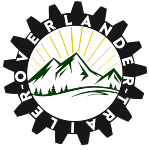Wiring propane systems in a DIY camper involves setting up electrical connections for propane-related components such as propane detectors, solenoid valves, and appliances like stoves or heaters. Here’s a step-by-step guide to help you wire propane in your DIY camper:
- Understand Propane Safety:
- Before you begin, familiarize yourself with propane safety guidelines. Propane systems require proper ventilation, leak detection, and appropriate handling to ensure safety.
- Gather Materials:
- Collect the necessary materials including electrical wires, connectors, fuses, switches, solenoid valves, propane detectors, and any other propane-related components you plan to install.
- Plan Wiring Layout:
- Determine the locations of your propane appliances, detectors, and solenoid valves. Plan the routing of wires to ensure a clean and organized installation.
- Battery Power Source:
- Identify a power source for your propane-related electrical components. This is usually the camper’s electrical system or a dedicated battery.
- Install Propane Detectors:
- Propane detectors are crucial for safety. Install them in areas where propane is likely to collect, such as near appliances or storage areas. Follow the manufacturer’s instructions for wiring and placement.
- Solenoid Valves:
- If you’re using solenoid valves to control propane flow to appliances, install them near the propane tanks. Wire them to the electrical system, following the manufacturer’s guidelines.
- Wire Routing:
- Route the wiring from the propane detectors and solenoid valves to your power source. Conceal the wires where possible and secure them to prevent damage.
- Connect Wires:
- Strip the ends of the wires and use appropriate connectors for the connections. Use wire nuts, crimp connectors, or soldering, depending on your skill level and preferences.
- Use Fuses and Circuit Breakers:
- Install appropriate fuses or circuit breakers in the wiring to protect against overloads and short circuits. Make sure to choose the correct amperage for the components you’re connecting.
- Switches and Controls:
- Install switches or controls to manually turn on or off the propane system or specific appliances. These switches can be located conveniently inside the camper.
- Grounding:
- Ensure proper grounding for all components. Grounding is important for safety and to prevent electrical issues.
- Testing:
- Before sealing up any walls or panels, test the entire propane wiring system. Ensure that all components are working correctly, including solenoid valves, detectors, and switches.
- Labeling:
- Label all switches, controls, and components related to the propane system clearly for easy identification.
- Seal and Secure:
- Once you’re confident that the wiring is functioning properly, secure and protect the wiring with appropriate conduits, sleeves, or enclosures.
- Regular Maintenance:
- Propane systems require regular inspection and maintenance to ensure proper function and safety. Check for leaks, ensure detectors are operational, and inspect all wiring connections.
- Consult Experts:
- If you’re not familiar with electrical systems or propane safety, it’s a good idea to consult professionals or experts to ensure a safe and reliable propane wiring setup.
Proper installation and wiring are critical for the safe and effective use of propane systems in your DIY camper. Always prioritize safety and follow manufacturer instructions and relevant regulations when wiring propane components.

buy inderal 20mg – buy inderal generic order methotrexate 2.5mg generic